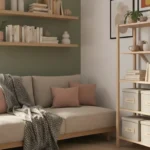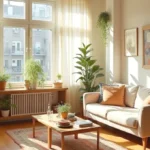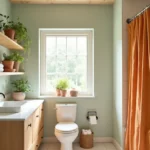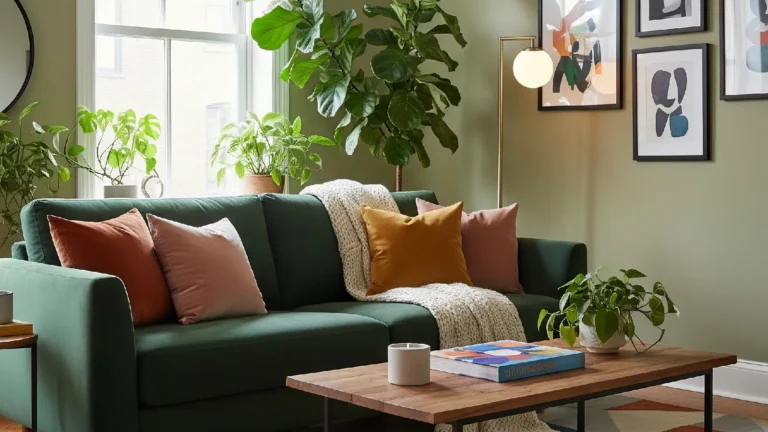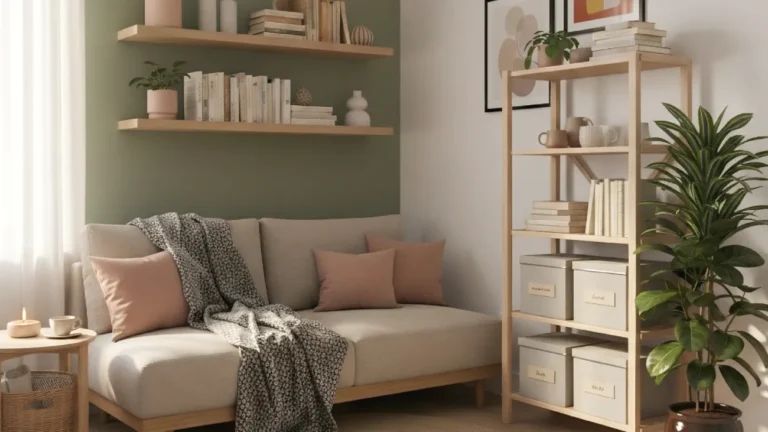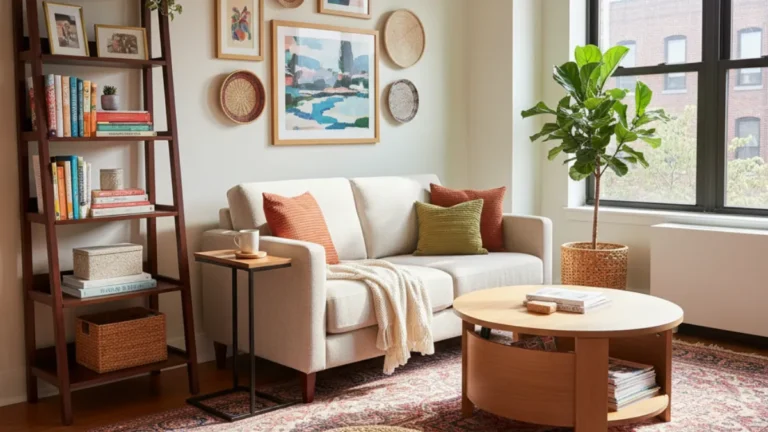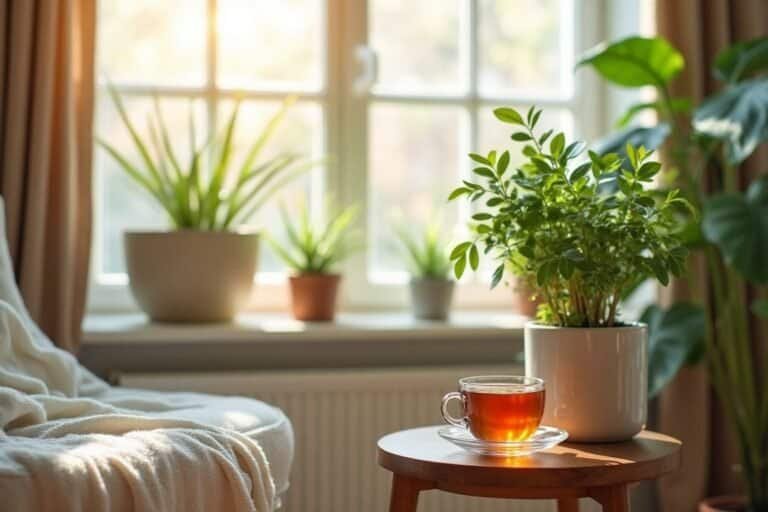Save Your Plants! InnerGlowHome’s Ultimate Guide to Identifying and Eliminating Common Pests and Diseases
Everything Was Perfect… Until Those Little White Bugs Appeared
Some time ago, my curiosity led me to a small home experiment: I placed a potato in an empty pot. What happened next was, for me, almost miraculous. In just two days, a beautiful plant sprouted, growing at an astonishing speed. In less than two weeks, it was almost a meter tall. It was the first time I’d planted something that grew so well. I felt genuinely excited and proud of that little plant.

But the joy was short-lived. Suddenly, tiny white insects started appearing on the leaves. Learning to identify and eliminate these common indoor plant pests early is crucial for keeping your greenery alive. As I’m quite new to the world of plants, I didn’t know what to do about these “invaders,” much less how to protect such an “exotic” plant for me. I tried what I could: first I sprayed with soapy foam, then with a generic pest product… but, sadly, it was too late. The plant began to wilt, and with great sadness, I had to say goodbye to it.
It was my first and only plant that I planted from scratch that grew so much, and so well, until the insects arrived. Later, researching, I learned that these plants, although visually striking, are very delicate and, in fact, often attract pests like whiteflies. That experience taught me a vital lesson: loving plants isn’t just about watering or admiring them; it’s also about learning how to protect them from their invisible enemies. Since that day, I understood that early detection and action are key to keeping our greenery alive.
What Are Indoor Plant Pests and Why Do They Attack Your Plants?
Indoor plant pests are small insects, or sometimes tiny organisms, that feed on different parts of your plants: leaves, stems, roots, or sap. Understanding why they appear is the first step to combating them:

- Excess Humidity: Constantly wet soil is a paradise for pests like fungus gnats in house, which lay their eggs in damp soil.
- Contaminated Soil: Sometimes, larvae or eggs already come in the soil you buy, especially if it’s not high quality or has been exposed. That’s why it’s important to look for indoor potting soil no bugs.
- Poor Ventilation: A stagnant environment without air movement creates the perfect breeding ground for many pests.
- New Infected Plants: This is one of the most common causes. A new acquisition can bring “unwanted guests” that then spread throughout your entire collection.
The worst part is that many of these houseplant pests are so tiny that you don’t see them until the damage is visible and the plant is already suffering. Early detection is key to saving your plants!
The 7 Most Common Pests on Indoor Plants (and How to Identify Them)
Knowing your enemy is half the battle. Here are the most frequent common houseplant pests and clues to identify them quickly:

1. Fungus Gnats
Identification: Small, almost imperceptible black flies that hover near the soil when you move the pot. The larvae are tiny bugs in houseplant soil and look like small white worms in damp soil. These are often the dreaded fungus gnats in house.
Symptoms: Young plants may wilt, and the main problem is their annoyance flying around the house.

2. Spider Mites
Identification: So tiny they look like red or white dots. The clearest sign is fine, web-like netting in leaf axils or on the underside of leaves.
Symptoms: Leaves start to dry out from the edges and lose their vibrant color. They are one of the most feared pests, these spider mites on houseplants.

3. Mealybugs
Identification: Look like small white, cottony balls stuck to stems, leaf veins, or joints. They are slow-moving and cluster together.
Symptoms: They secrete a sticky honeydew that attracts black mold and weakens the plant by sucking its sap.

4. Aphids
Identification: Tiny insects, which can be green, black, yellow, or pink. They cluster on new shoots and the underside of young leaves.
Symptoms: They weaken and deform leaves, and also secrete honeydew. Aphids on houseplants can be very persistent.

5. Whiteflies
Identification: Small, winged, white insects that fly up in a small “cloud” when you shake the plant.
Symptoms: They leave yellow or silvery spots on leaves and stunt growth.

6. Thrips
Identification: Elongated, dark brown insects, very difficult to spot with the naked eye. You’ll see them moving quickly.
Symptoms: They leave silvery streaks or discolored spots on leaves, indicating they are feeding on the sap.

7. Scales
Identification: Look like small brown or black (sometimes white) immobile plates firmly attached to stems and the underside of leaves.
Symptoms: They suck sap and can cover entire stems, severely weakening the plant.
Healthy home, happy plants
Declutter Your Space, Free Your Mind
Simple tips to make your small space feel spacious and organized
Learn easy ways to clear clutter, organize your items, and create a home that feels airy and welcoming.

Act Fast! What to Do When You Spot a Pest at Home
When you discover a pest, don’t panic, but act immediately! Time is of the essence if you want to save your plant.

- Isolate the plant: Immediately separate the infected plant from the rest of your collection to prevent the pest from spreading.
- Inspect thoroughly: With an inspection magnifying glass (yes, it’s a key tool), check every leaf (especially the underside), stems, and the base of the plant.
- Initial cleaning: If the pest is visible, you can gently wipe it off with a damp cloth or a cotton swab soaked in water with a few drops of diluted insecticidal soap.
- Manually remove: With gloves, remove any visible insects you can with a toothpick or your fingers.
- Change the soil (if necessary): If the pest is in the soil (like fungus gnats), remove the top layer of soil or replace all the soil with new, quality potting mix.
- Apply specific treatment: Once clean, use a product designed for the pest you identified.
Remember: the sooner you act, the higher your chances of saving it and preventing the pest from becoming a bigger problem.
Home Remedies That Work (Sometimes): What You Can Try Yourself
Before resorting to stronger products, there are some home remedies you can try. These are especially useful for early infestations or as a complement to other treatments.

- Insecticidal Soap: Dissolve a teaspoon in a liter of water and spray the plant (including the underside of the leaves) every 3 days. It’s a good natural insecticidal soap for indoor plants.
- 70% Diluted Alcohol: Moisten a cotton swab and apply it directly to mealybugs or scales. The alcohol dissolves them.
- Neem Oil: It’s a natural and preventive insecticide. Mix a few drops with water and a little mild soap (emulsifier) and spray the entire plant. It’s also an excellent natural pesticides for indoor plants.
- Homemade Fly Traps: For fungus gnats, a homemade fly trap indoor can be effective. Mix apple cider vinegar with a few drops of dish soap in a glass, or place a sliced potato in the soil near the plant (the bugs will go to the potato, which you can then discard).
- Yellow Sticky Stakes (Houseplant Sticky Stakes): Not homemade, but a very simple and non-toxic method for catching adult flies and thrips. They are very effective as a fly trap indoor.

⚠️ Important: If the infestation is advanced, home remedies may not be enough. It’s crucial to be realistic and be willing to escalate treatment if necessary.
Looking for more inspiration?
Small Living Room Layouts That Wow
Maximize your space without sacrificing style
Discover layouts that make your living room feel larger, organized, and cozy.
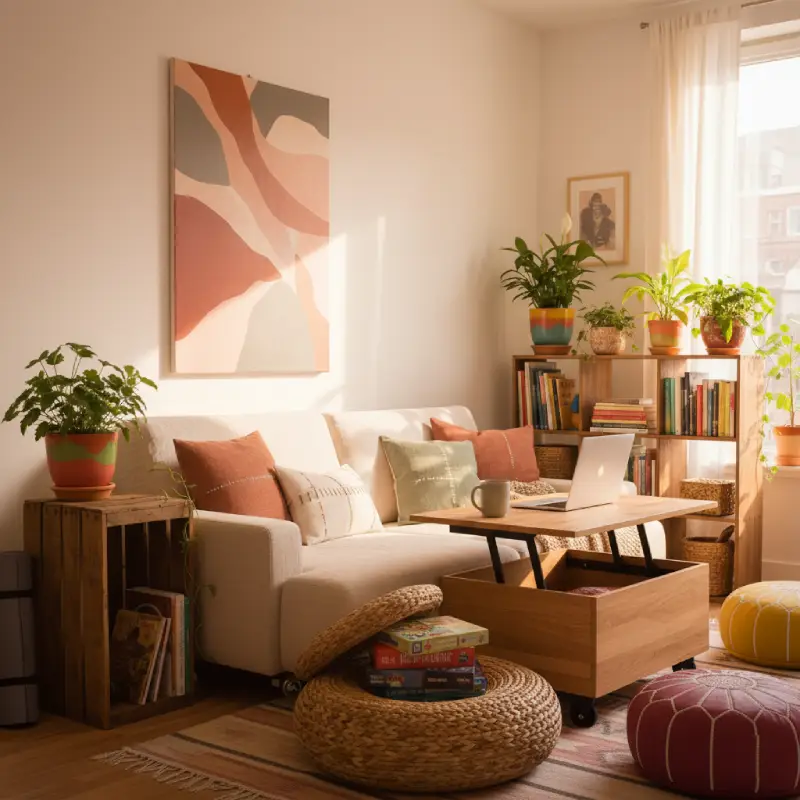
360° Prevention: How to Keep Them from Coming Back
The best strategy against pests is prevention. With these practices, you’ll minimize the risk of future attacks and keep your plants healthy and happy:

- Mindful Watering: Water only when the plant needs it. Constantly damp soil attracts many pests, especially gnats in plants.
- Use Quality Potting Mix: Invest in the best soil for indoor plants no bugs. Good soil drains well and is free of larvae or spores.
- Don’t Reuse Old Soil: Avoid problems by recycling soil from plants that have been previously infested.
- Inspect New Plants: Before integrating any new acquisition into your collection, thoroughly check it for signs of pests. Isolate it for a few days if you have doubts.
- Place Sticky Traps: Houseplant sticky stakes act as a continuous preventive measure, catching any flying insects before they establish themselves.
- Maintain Good Ventilation and Hygiene: Ensure good air circulation in your spaces and regularly clean your plant leaves to remove dust that can hide pests.
Frequently Asked Questions (FAQs) About Indoor Plant Pests
To clarify any doubts, here are answers to the most common questions about houseplant pests control:
- What are those little white bugs in my pot soil?
- Probably fungus gnat larvae (flies in plants larvae). They are small and white. It indicates excess moisture. It’s time to act.
- What’s the best natural insecticide?
- Neem Oil is highly recommended for being natural, safe, and effective for both control and prevention.
- How often should I apply treatment?
- It depends on the pest and the product, but most treatments (especially homemade ones or soaps) should be applied every 3-7 days for at least 2 to 3 weeks to break the pest’s life cycle.
- How to get rid of fungus gnats in house?
- Control watering: let the top layer of soil dry completely between waterings. Use yellow sticky traps, and if persistent, you can try beneficial nematodes.
- Which plants are most prone to infestations?
- Some common houseplant varieties like Pothos, Calatheas, Ferns, and succulents (especially if their soil stays too wet) tend to be more susceptible to certain pests. Plants with very dense foliage can also be a refuge for bugs.
Conclusion – From Frustration to Control: Yes, You Can Save Your Plants
When I lost my potato plant because I didn’t know how to react to the pest, I felt a lot of frustration and helplessness. Today, I know that with the right information, a little prevention, and the right tools, you can avoid losing yours. My experience taught me that the key isn’t to be an expert, but to be observant and willing to learn and act.

Don’t let small insects ruin the pleasure of having a home full of green life.
Your plants will thank you, filling your home with beauty and tranquility. And so will you, for the satisfaction of seeing them thrive thanks to your care.
Articles you might enjoy
- Good Quality Cheap Furniture: Your Essential Guide to Styling, Durable, and Regret-Free Furnishing
- Say Goodbye to Clutter: The Best Storage Ideas for Small Apartments and Organized Living
- Smart Furniture for Small Spaces: Your Guide to Space-Saving, Multi-Functional Pieces
- Expert Design for Small Living Rooms: The Best Layout Ideas for Your Functional Home
- Dream Bathroom, Budget Price: Your Guide to Bathroom Remodel Ideas on a Budget (With All Your Soul!)
Table of Contents
Good Quality Cheap Furniture: Your Essential Guide to Styling, Durable, and Regret-Free Furnishing
Dreaming of a stylish home on a budget? Discover how to find good quality cheap furniture, learn smart shopping tricks & avoid bad purchases.
Say Goodbye to Clutter: The Best Storage Ideas for Small Apartments and Organized Living
Say Goodbye to Clutter: The Best Storage Ideas for Small Apartments and Organized Living Living in a small apartment—or even a spacious one that feels perpetually unmanageable—can be a daily source of frustration. It’s not merely about square footage; it’s about how efficiently every inch is utilized. I experienced this firsthand: despite living in a…
Smart Furniture for Small Spaces: Your Guide to Space-Saving, Multi-Functional Pieces
Struggling with space? This guide helps you find smart furniture for small spaces, from versatile bookcases to multi-functional sofas, to transform your home.


